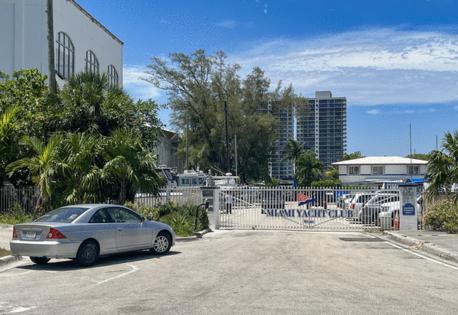Does sailboat have right of way against barge in crash? Coast Guard rules to decide that
Published in News & Features
MIAMI — The question of which vessel had the right-of-way is likely to be a major component of the Coast Guard’s investigation into the barge that crashed into a sailboat in Biscayne Bay off Miami Beach Monday morning, killing two children and leaving two critically injured.
While the investigation is only beginning, the Coast Guard’s Navigational Rules will guide the criminal investigation. Sailboats typically have the right-of-way over engine-powered boats on the water, but there are exceptions. One of these may be at play in Monday’s tragedy.
According to the agency’s Rules of Navigation, one type of vessel a sailboat operator must give way to is one “restricted in her ability to maneuver.”
This is defined in the rules as “a vessel which, from the nature of her work, is restricted in her ability to maneuver as required by these Rules and is therefore unable to keep out of the way of another vessel.”
This includes one vessel towing another because the job “restricts the towing vessel and her tow in their ability to deviate from their course,” the Coast Guard’s Rules of Navigation say.
Whether a tug boat pushing a barge falls under that definition will likely be central to the Coast Guard’s investigation. The photographs show a tug pushing a large barge with a crane mounted on top of it. The barge is carrying what looks like pilings for a dock.
The sailboat was carrying five girls and a camp counselor and was part of the Miami Yacht Club summer camp program to teach children about sailing.
On Monday night, the Coast Guard said a 7-year-old girl and a 13-year-old girl had died. In critical condition at Jackson were an 8-year-old girl and an 11-year-old girl. The two who were rescued were a 12-year-old girl and a 19-year-old female.
The Coast Guard, working with other law-enforcement agencies, will conduct a criminal probe.
Civil law is a different animal, and there are aspects of the crash that could lead a jury to believe the tug boat and barge crew were the party more responsible for avoiding the collision, said Brett Rivkind, a longtime Miami maritime personal injury attorney. Civil law involves suing for monetary damages.
Question of whether there was a lookout on barge
In his initial read of the situation, Rivkind said it appears to him that the tug boat pushing the barge and the crew of the barge had the responsibility to avoid hitting the much smaller sailboat. In addition to maintaining a proper speed in an area known to be popular with recreational boaters, the barge should have also had someone operating as a lookout for anything in its way.
“Failure to observe the sailboat in time to take evasive action in time points to the clear liability of the tug and barge operator,” Rivkind said. “There should have been a proper lookout and a proper speed maintained to not get close enough where you’d have take evasive action like that.”
_____
©2025 Miami Herald. Visit miamiherald.com. Distributed by Tribune Content Agency, LLC.







Comments